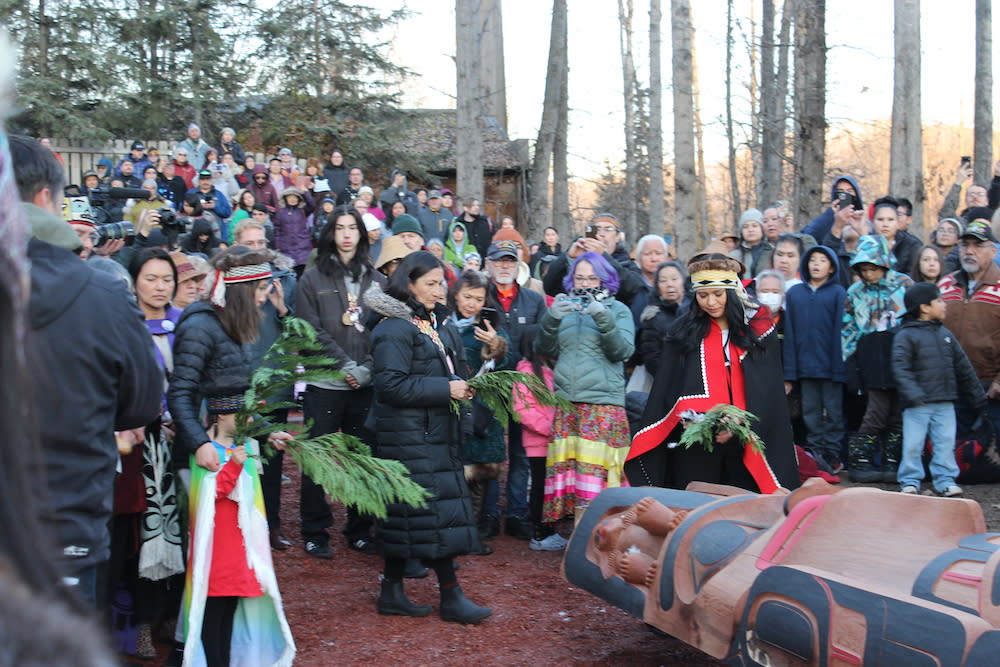The Road to Healing: The Power of Tribal Communities

Opinion. In the summer of 2021, a month after the world was awakened by the discovery of 215 remains of innocent school children at the Kamloops Industrial Residential School in British Columbia, I attended a community event in my hometown, Grand Rapids, Michigan. The four-hour event included a potluck dinner, jingle-dress dancing, and a talking circle.
The talking circle was filled with honest dialogue and tears. One young woman spoke about how she spent an afternoon with the dry hives because she was so distraught to know innocent First Nations children died while attending the Kamloops school. My biggest takeaway from that event was that a new generation of young Native Americans discovered the truths of Indian boarding schools that we older Native Americans already knew for decades.
As a Native American journalist, I sometimes have difficulty reporting things I experience alongside my tribal community. As a Potawatomi, I share the pain and grief. That was the case on this day in 2021. I did not report on the event at the time. I couldn’t.
This event took place a full year before the beginning of the U.S. Department of the Interior’s Road to Healing tour began in Anadarko, Oklahoma in July 2022. Since then, there have been 11 Road to Healing listening sessions, including one yesterday in Albuquerque, New Mexico.
At all of the Road to Healing sessions, Native elders have testified about their experiences while attending Indian boarding schools, including incidences of physical, emotional, and sexual abuse.
I am always amazed at the raw candor of those making their oral testimonies at these listening sessions. The elders recount atrocities that happened decades ago in vivid details as if they occurred a week or two ago. It is as if they have played a tape recorder in their minds over and over for years and are finally allowed to hit the play button and turn up the volume.
Often the testimonies are spoken by the elders who are visibly shaking with tears running down their cheeks.
At the Road to Healing event on Sunday, Tunica-Biloxi Tribe of Louisana Chairman Marshall Pierite was one of several tribal leaders in attendance.
"It was very important to hear the truth of what happened in these boarding schools. I am very proud of Secretary Haaland having these hearings because this is what will begin the healing process," Pierite told Native News Online.
I have seen that healing in action. A week prior, after a day of testimonies, a healing totem pole was raised on the grounds of the Alaska Native Heritage Center.
Some 500 Alaska Native people gathered to observe the raising of the healing totem pole. The raising was a community event utilizing the hands of many, including Interior Secretary Deb Haaland (Laguna Pueblo), who assisted in blessing the pole, and Assistant Secretary Bryan Newland (Bay Mills Indian Community), who helped carry it.
This healing totem pole was conceived by Haida elder Norma Jean Dunne (Haida/Tsimshian).
It was carved this year at the Alaska Native Heritage Center by Haida master carvers Gidaawaan Joe Young and Sgwaayaans T.J. Young.
An inscription for the healing totem pole reads: The healing totem depicts Bear mother who can be seen clutching her two cubs while the father (in human form) sits above her, embedded in a raven’s tail. Above him, the raven is mid-transformation, at a place in between a human and a raven form. Two children rest comfortably in raven’s ears.
The raising of the healing totem pole was part of a long event mixed with song, dance, and cultural ceremony. The totem pole was finally raised just before sundown in remembrance of the thousands of victims of Indian boarding schools. It is the only totem pole raised for Indian boarding school victims in the United States.
Seeing the large crowd come out to remember Indian boarding school victims was a powerful experience. Immediately after the raising of the totem pole, I was given a ride to the airport for a red-eye trip back home. I left Anchorage with a renewed hope for healing because the totem pole was a symbol that healing is possible for our tribal communities that have suffered for so long.
The totem pole is a lasting symbol. But, it is the power of the tribal community coming together that will stay with me forever.
We know that healing is a journey that may last a lifetime. It comes in a variety of ways: the acknowledgement of past pains, mental health counseling, praying to high power, and, maybe most importantly, tribal communities coming together.
Community is everything to Native people. We can never forget that there is power in coming together in the spirit of unity.
Thayék gde nwéndëmen - We are all related.
About the Author: "Levi \"Calm Before the Storm\" Rickert (Prairie Band Potawatomi Nation) is the founder, publisher and editor of Native News Online. Rickert was awarded Best Column 2021 Native Media Award for the print\/online category by the Native American Journalists Association. He serves on the advisory board of the Multicultural Media Correspondents Association. He can be reached at levi@nativenewsonline.net."
Contact: levi@nativenewsonline.net

